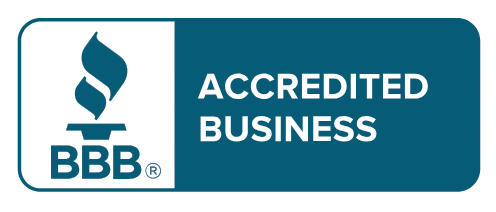Energy-Efficient Home Building: Your Ultimate Guide

Creating an energy-efficient home can save you money, reduce your carbon footprint, and increase the comfort of your living space. In this article, we’ll explore the essentials of energy-efficient home building, offering practical tips and insights based on real-world experience.
Key Takeaways
- Energy-efficient homes can significantly reduce utility costs and environmental impact.
- The building envelope is crucial for maintaining energy efficiency.
- Insulation, windows, and doors play vital roles in controlling temperature.
- HVAC systems and renewable energy sources can further enhance energy efficiency.
- Practical tips and real-life experiences help inform better building decisions.
Understanding Energy Efficiency in Home Building
Energy efficiency in home building refers to creating structures that use less energy to perform the same functions as standard homes. This means better insulation, advanced windows, and doors, energy-efficient heating and cooling systems, and sometimes incorporating renewable energy sources.
The Building Envelope: Your First Line of Defense
The building envelope—walls, roofs, and foundations—is the first step in creating an energy-efficient home. Proper construction and materials can prevent heat loss in winter and keep your home cool in summer.
- Insulation: Use high-quality insulation materials to keep your home temperature consistent.
- Advanced framing techniques: These methods reduce wood use and allow more space for insulation.
- Sealing gaps: Properly sealing gaps around windows, doors, and plumbing reduces air leaks.
Insulation: The Key to Temperature Control
Insulation is fundamental for energy efficiency. It reduces the need for heating and cooling, leading to significant energy savings.
- Types of insulation: Fiberglass, foam board, and spray foam are common options.
- R-value: This is a measure of insulation's effectiveness. Higher R-values mean better insulation.
- Installation: Insulation should be installed in walls, roofs, floors, and around ducts and pipes.
Windows and Doors: The Guardians of Your Home's Interior
Windows and doors can be significant sources of heat loss. Choosing the right ones can improve your home's energy efficiency.
- Double or triple glazing: These windows have multiple panes of glass with air or gas between them to reduce heat transfer.
- Low-E coatings: These coatings on glass reflect infrared light, keeping heat inside in winter and outside in summer.
- Proper sealing: Ensure that all windows and doors are properly sealed to prevent air leaks.
HVAC Systems: Efficient Heating and Cooling
Heating, ventilation, and air conditioning systems consume a lot of energy. More efficient systems can make a big difference.
- Energy Star-rated systems: These meet strict efficiency guidelines set by the EPA.
- Programmable thermostats: These allow you to set temperatures for different times of day, reducing energy use.
- Regular maintenance: Keeping your HVAC system in top shape ensures it runs efficiently.
Renewable Energy Sources: Powering Your Home Sustainably
Using renewable energy sources can further increase your home's energy efficiency.
- Solar panels: These convert sunlight into electricity, reducing your reliance on the grid.
- Wind turbines: Suitable for some locations, these can generate electricity from wind.
- Geothermal systems: These use the earth's constant temperature to heat and cool your home.
Real-Life Experiences and Practical Tips
Here are some real-life tips and experiences from homeowners and builders who have successfully created energy-efficient homes.
Insulation Success Stories
Many homeowners report significant energy savings after upgrading their insulation. For example, one Charleston resident saw their heating bill cut in half after installing spray foam insulation in their attic and walls.
Window Wonders
A homeowner replaced all their single-pane windows with double-glazed, Low-E windows. They noticed not only lower energy bills but also a more comfortable and quieter home environment.
- Learn about HVAC system efficiency ratings from Energy.gov
- Discover Energy Star-certified central air conditioners
- Explore Energy Star-certified heat pumps
- Find Energy Star-certified furnaces
- Check out Energy Star-certified boilers
A couple installed an Energy Star-rated HVAC system with a programmable thermostat. They found it easier to maintain a consistent temperature and saw a noticeable reduction in their energy bills.
Solar Power Solutions
One family installed solar panels on their roof and found that they could power most of their home with solar energy. They appreciated the environmental benefits and the reduced electricity costs.
Detailed Analysis: Energy Efficiency Metrics
Cost Savings from Energy-Efficient Upgrades
Upgrade Initial Cost Annual Savings Payback Period
- Spray Foam Insulation $2,500 $800 3.1 years
- Double-Glazed Windows $7,200 $1,000 7.2 years
- Star HVAC System $5,000 $600 8.3 years
- Solar Panel Installation $15,000 $1,500 10 years
Energy Efficiency Improvements and Impact
Improvement Energy Savings Environmental Benefit
- High-Quality Insulation 20-30% Reduced carbon emissions
- Low-E Windows 10-15% Improved air quality
- Programmable Thermostats 10-15% Lower energy demand
- Solar Power Installation 50-70% Renewable energy
Additional Tips for Energy-Efficient Home Building
- Site Orientation: Position your home to take advantage of natural light and shade.
- Energy-Efficient Appliances: Choose appliances with high energy efficiency ratings.
- Water Heating: Consider tankless water heaters or solar water heating systems.
- Lighting: Use LED bulbs and fixtures to reduce electricity use.
- Smart Home Technology: Implement smart controls for lighting, heating, and cooling.
Conclusion
Building an energy-efficient home is a practical and rewarding endeavor. By focusing on the building envelope, insulation, windows, and doors, HVAC systems, and renewable energy sources, you can create a comfortable, cost-effective, and environmentally friendly living space. Use the tips and real-life experiences shared in this article to guide your own energy-efficient home-building project.
Creating an energy-efficient home is not just about saving money; it’s about creating a sustainable future for our planet. Whether you’re building from scratch or retrofitting an existing home, the steps you take toward energy efficiency will have a lasting impact. Start your journey today and enjoy the benefits of a more efficient and eco-friendly home.






